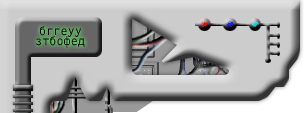On April Fool's Day, 1976, Steve Wozniak and Steve Jobs released the Apple I computer
and started Apple Computers. The Apple I was the first single circuit board computer. It came with a video interface, 8k of
RAM and a keyboard. The system incorporated some economical components, including the 6502 processor (only $25 dollars - designed
by Rockwell and produced by MOS Technologies) and Dynamic RAM.
The pair showed the prototype Apple I, mounted on plywood with all the components visible,
at a meeting of a local computer hobbyist group called "The Homebrew Computer Club" (based in Palo Alto, California). A local
computer dealer (The Byte Shop) saw it and ordered 100 units, providing that Wozniak and Jobs agreed to assemble the kits
for the customers. About two hundred Apple Is were built and sold over a ten month period, for the superstitious price of
$666.66.
In 1977, Apple Computers was incorporated and the Apple II computer model was released.
The first West Coast Computer Faire was held in San Francisco the same year, and attendees saw the public debut of the Apple
II (available for $1298). The Apple II was also based on the 6502 processor, but it had color graphics (a first for a personal
computer), and used an audio cassette drive for storage. Its original configuration came with 4 kb of RAM, but a year later this was increased to 48 kb of RAM
and the cassette drive was replaced by a floppy disk drive.

